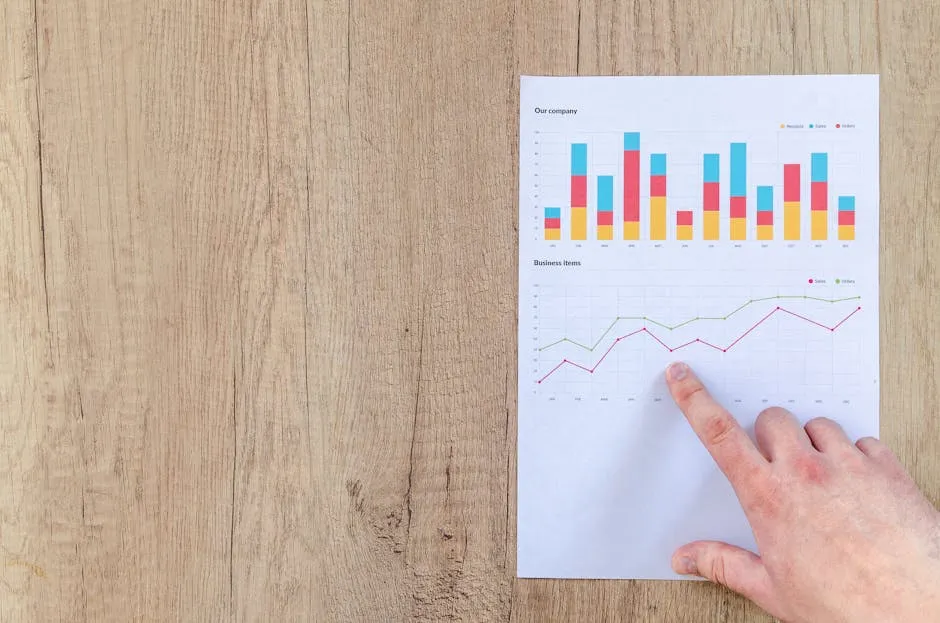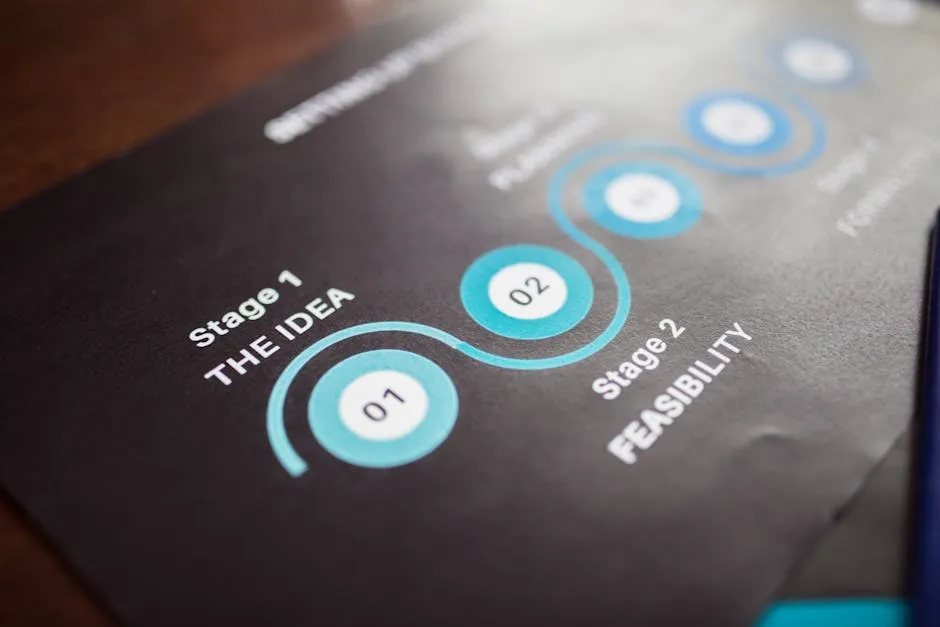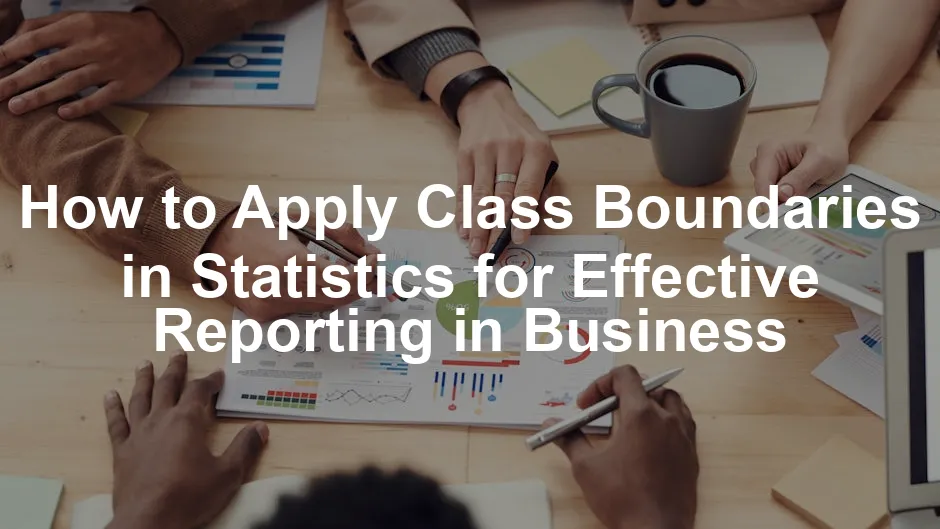Introduction
Understanding class boundaries in statistics is not just for mathematicians and data scientists; it’s a crucial skill for professionals navigating the complex world of business reporting. Imagine trying to make data-driven decisions without a clear structure—chaos, right? Class boundaries help organize data into manageable intervals, ensuring that businesses interpret their metrics accurately and efficiently.
Picture this: you’re analyzing customer feedback scores ranging from 1 to 100. Without class boundaries, how would you even begin to categorize that data? Class boundaries define the edges of these intervals, allowing you to group similar scores together. This organization leads to clearer insights and more meaningful reporting. To dive deeper into the statistical methods that can help with this, consider checking out Statistics for Business and Economics.
In this article, we will unravel the mystery of class boundaries. We’ll show you how to utilize them effectively for robust business reporting. From defining class intervals to practical applications in various business scenarios, we’ll ensure you’re equipped with the knowledge to elevate your data analysis game.
Class boundaries are not just theoretical concepts; they have real-world implications. They influence how businesses interpret sales figures, customer satisfaction ratings, and employee performance metrics. By the end of this article, you’ll see how applying class boundaries can transform your data handling processes and enhance decision-making across the board. If you’re looking for a fun way to understand statistics, check out Naked Statistics: Stripping the Dread from the Data.

Summary
This comprehensive guide explores the intricacies of applying class boundaries in statistics, particularly in a business context. We start by defining class boundaries and their significance in data organization, highlighting how they prevent misinterpretation of information. The article will delve into the step-by-step process of calculating class boundaries, providing examples to illustrate each point.
We’ll discuss the importance of class boundaries in creating accurate histograms and frequency distributions, which are essential for visualizing data trends. Furthermore, we will explore various business use cases, such as performance analysis, financial reporting, and market research, demonstrating how class boundaries enhance data interpretation and decision-making. For a deeper dive into summary statistics table, check out our related article.
Understanding summary statistics is key for effective data analysis. Learn more about summary statistics tables.
To ensure a thorough understanding, we’ll address common questions and misconceptions surrounding class boundaries, including their relationship with class limits and class intervals. By the end of this article, you’ll not only grasp the concept of class boundaries but also appreciate their value in effective business reporting.
Class boundaries can change the way you perceive data. They offer a structured approach to handle statistics, allowing for insightful analysis. When you categorize data effectively, you can spot trends and anomalies that would otherwise go unnoticed. This clarity leads to better strategic decisions and ultimately drives business success. And if you want to sharpen your skills, consider Practical Statistics for Data Scientists.
So, whether you’re a novice or a seasoned data analyst, understanding and applying class boundaries is essential. Let’s jump into the nitty-gritty of this vital statistical tool and see how it can revolutionize your approach to business reporting!

Understanding Class Boundaries
What are Class Boundaries?
Class boundaries are the lines that separate class intervals in a dataset. Think of them as the invisible fences that keep your data neatly organized. They define the edges of each class and ensure that there are no gaps between intervals.
For example, if you have a range of data from 1 to 100, you might group it into intervals like 0-10, 11-20, and so on. The class boundaries here would be 0.5 and 10.5 for the first interval, and 10.5 and 20.5 for the second.
Class boundaries differ from class limits and class intervals. Class limits refer to the actual values that define the start and end of a class interval. In contrast, class intervals are the ranges that represent the data grouped together. Understanding these distinctions is crucial for accurate data analysis.
Class boundaries are essential for creating accurate histograms and frequency distributions. They ensure that data points are categorized correctly, allowing for better data interpretation and visualization. When data is grouped effectively, it simplifies the task of identifying trends and patterns. If you want a solid foundation in probability and statistics, grab Introduction to Probability and Statistics.

Importance of Class Boundaries in Statistics
Class boundaries play a pivotal role in data segmentation. They help analysts categorize data into manageable chunks. By doing so, businesses can analyze trends and make informed decisions based on accurate data representations.
When you have a clear structure for your data, it enhances the accuracy of your reporting. Class boundaries reduce ambiguity in data interpretation. This clarity is vital for decision-making processes, especially in business environments where stakes are high.
Imagine trying to report on sales performance without clear class boundaries. You might miss out on valuable insights about customer behavior. Accurate segmentation allows businesses to tailor their strategies effectively. If you’re diving into data visualization, consider Data Visualization with Python and Matplotlib.
Furthermore, class boundaries impact the overall quality of statistical analysis. They help prevent misinterpretation of data. When data is analyzed using well-defined boundaries, it leads to more reliable conclusions and actionable insights. This accuracy translates directly into better business strategies and outcomes.
In summary, understanding class boundaries is not just an academic exercise. It’s a vital skill that can significantly enhance data analysis in a business context. By applying class boundaries effectively, businesses can ensure that their reporting is accurate, meaningful, and aligned with their strategic goals.

Practical Applications of Class Boundaries in Business
Use Cases in Reporting
1. Financial Analysis: Utilizing class boundaries can significantly enhance the analysis of revenue segments. By categorizing revenue into clear intervals, businesses can better understand their financial performance. For example, a company might set boundaries for sales figures like 0-10k, 10k-50k, and 50k-100k. This segmentation allows financial analysts to identify trends and patterns, leading to informed decision-making. Want to know where your sales are lacking? Class boundaries provide that insight! For a solid reference, check out Business Statistics for Dummies.
2. Market Research: Class boundaries play a crucial role in categorizing customer demographics for targeted marketing strategies. Let’s say a retail company collects data on age groups. By applying boundaries such as 18-24, 25-34, and 35-44, marketers can tailor their campaigns to specific age segments. This approach not only enhances engagement but also optimizes marketing budgets. Knowing who to target and how can be a game changer for businesses looking to improve their outreach.
3. Performance Metrics: Analyzing employee performance scores becomes a breeze with class boundaries. Imagine a company that evaluates employees on a scale from 1 to 100. By creating intervals like 0-50, 51-75, and 76-100, HR can easily identify performance trends. This method allows for clearer feedback and targeted training initiatives. Employees understand where they stand, and organizations can foster a culture of continuous improvement. If you’re looking to enhance your data skills, consider The Art of Data Science.

Enhancing Data Visualization
Class boundaries also elevate the quality of data visualization. Histograms and charts become more effective when class boundaries are applied. They provide a structured way to display data distributions, making it easier for stakeholders to grasp complex information. For instance, using class boundaries in a histogram of sales data allows viewers to quickly identify peak sales periods and areas needing attention.
Consider a company that successfully implemented this approach: a tech firm used class boundaries to visualize customer satisfaction ratings. By creating clear intervals, they were able to present data in a way that highlighted trends over time. The result? Better strategies for improving customer experience and loyalty. If you want to explore the practical side of data science, grab Data Science for Business.
Businesses that leverage class boundaries in their reporting not only enhance clarity but also facilitate better communication of insights across teams. This ensures everyone, from executives to ground-level employees, is on the same page regarding performance and objectives.
In conclusion, class boundaries are not just a statistical tool; they are a gateway to more effective reporting and analysis in business. From financial assessments to targeted marketing and performance tracking, the applications are as diverse as they are impactful. Get ready to embrace clear, structured data insights that drive your business forward!

Common Misconceptions and FAQs
FAQs
– What is the difference between class limits and class boundaries? Class limits are the actual values that define the start and end of a class interval. Class boundaries, on the other hand, are the values that separate adjacent classes, accounting for any gaps. For instance, in the class interval 10-20, the class limits are 10 and 20, while the boundaries would be 9.5 and 20.5, ensuring no overlap occurs.
– How do class boundaries affect data analysis? Class boundaries are essential for accurately categorizing data. They help eliminate ambiguity in data representation, enhancing the reliability of analysis. When data is organized into well-defined intervals, analysts can draw more meaningful conclusions, identify trends, and make informed decisions.
– Can class boundaries be used for non-numeric data? While class boundaries are primarily associated with numeric data, they can also be applied to categorical data by creating intervals based on categories. For example, in a survey with responses like “satisfied,” “neutral,” and “dissatisfied,” boundaries can help segment feedback, aiding in clearer analysis and reporting.

Addressing Misunderstandings
Many people confuse class intervals with class boundaries. Class intervals define the range of values for data grouping, while class boundaries ensure there are no gaps between these intervals. This distinction is crucial for accurate data representation.
Additionally, some may believe class boundaries are only relevant for quantitative data. However, they can also serve qualitative data analysis by helping define categories effectively. Understanding this versatility enhances the potential applications of class boundaries across various business functions.
By clarifying these points, businesses can better utilize class boundaries for effective reporting and informed decision-making. If you’re looking for a solid introduction to statistical learning, check out An Introduction to Statistical Learning.

Addressing Misunderstandings
When tackling class boundaries, confusion often arises between class intervals and class boundaries. Class intervals represent the range of values that data can occupy. Picture them as cozy little houses where your data points reside. On the other hand, class boundaries are the imaginary lines that separate these houses, ensuring no data point feels lost in between.
For instance, if one class interval ranges from 10 to 20, the class boundaries would be 9.5 and 20.5. This demarcation ensures clarity and precision in data representation. Without these boundaries, data might overlap, creating chaos in your analysis.
Now, let’s tackle the subject of continuous versus discrete data. Class boundaries are especially crucial for continuous data, where values can take on any number within a range. Imagine a temperature scale—there’s no limit to the values it can display. Here, boundaries help prevent gaps between classes, ensuring a smooth transition from one temperature range to another.
In contrast, discrete data consists of distinct, separate values, like the number of customers visiting a store. While class boundaries still apply, they play a slightly different role. For discrete data, class boundaries ensure that each value is accurately represented. Think of them as the fence posts marking the edges of your data fields—keeping everything neatly organized.
Understanding these distinctions is vital for effective reporting. By clarifying the role of class boundaries in both continuous and discrete data, businesses can enhance their data analysis, leading to more accurate and insightful decision-making. After all, in the world of statistics, precision is key! And if you’re interested in statistical programming, consider A First Course in Statistical Programming with R.

Additional Resources
Looking to enhance your grasp of statistics and data analysis? Here’s a curated list of resources that can help you dive deeper into the world of class boundaries and effective data reporting.
Books:
- Statistics for Business and Economics by Paul Newbold, William L. Carver, and Betty Thorne. This book offers a comprehensive understanding of statistical methods and their applications in business contexts.
- Naked Statistics: Stripping the Dread from the Data by Charles Wheelan. A fun and engaging read that simplifies complex statistical concepts for practical use.
- Practical Statistics for Data Scientists by Peter Bruce and Andrew Bruce. This book combines statistical theory with practical applications, making it perfect for data analysts.
- The Visual Display of Quantitative Information by Edward R. Tufte. This book is a must-read for anyone looking to present data in a visually appealing and informative manner. Grab it here.
Online Courses:
- Coursera: Look for courses like “Business Statistics and Analysis” or “Data Analysis and Visualization with Python” for hands-on learning.
- edX: Consider enrolling in “Introduction to Data Science” to understand the fundamentals of data analysis and reporting techniques.
Software Tools:
- R: An open-source programming language ideal for statistical computing and graphics.
- Tableau: A powerful data visualization tool that simplifies the creation of interactive and shareable dashboards.
- Excel: A staple for data analysis, offering robust functions for statistical calculations and visualizations. If you want to upgrade your Excel skills, check out Excel 2021 for Dummies.
Further Reading:
- How to Calculate Class Boundaries in Statistics on Sourcetable offers a detailed guide on boundary calculations.
- The GeeksforGeeks article on Finding Class Limits in Statistics provides practical insights into deriving limits and boundaries.
- Blogs on data reporting best practices, such as those found on Scribbr, can offer tips on creating effective presentations of your statistical findings.
These resources will empower you to master the statistics necessary for effective business reporting and analysis. Happy learning! And if you’re looking to keep your devices charged on the go, don’t forget to check out the Anker PowerCore Portable Charger.

Please let us know what you think about our content by leaving a comment down below!
Thank you for reading till here 🙂
All images from Pexels




